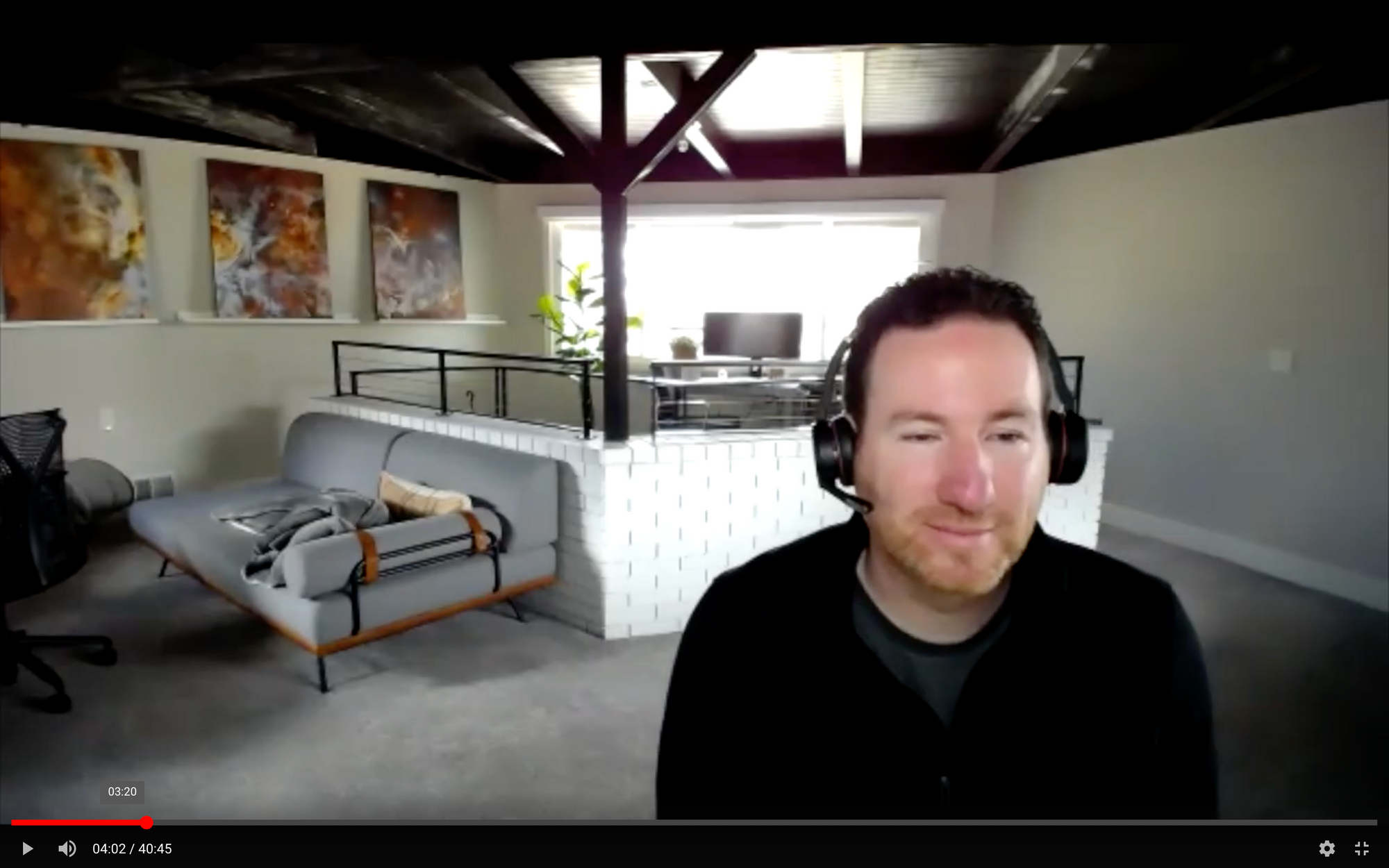In the midst of the coronavirus pandemic, fundraising might seem impossible, but that doesn't mean you should stop connecting with investors altogether.
In fact, now is a good time to focus on nurturing investor relationships — the main strategy ’nuffsaid founder Chris Hicken recommends for early-stage startups.
Chris would know — earlier this year, he raised a $4.3 million seed round.
Launched in February 2020, ’nuffsaid integrates employees’ email, chat, Salesforce, LinkedIn, texts and other platforms into a single view, then uses artificial intelligence to sort tasks and meetings by priority.
Previously, Chris was President and COO of User Testing where he helped raise almost $80 million. He also spent a year as a partner at Inspiration VC, a fund that invests exclusively at the pre-seed and seed stage in early stage companies. His time at Inspiration helped Chris realize what investors were looking for at the early stages of investment.
“At the pre-seed or the seed round, there’s so little evidence your idea is going to work that VCs kind of discount your product idea,” Chris says. “They’re looking at other factors. Number one is: can you convince me a problem exists and is severe enough people will pay money for it? Number two is the quality of the entrepreneur.”
On an episode of How I Raised It, Chris shared exactly how he structured his process to nurture relationships from day one — and how that led him to land his dream team of investors.
Identify your investor dream team
Chris first started the fundraising process by building out a list of individuals he wanted to invest in ‘nuffsaid. When selecting his dream team, he and his co-founders agreed that their seed investors had to meet five criteria:
- Have a high risk profile, with a drive to create something big
- Be diverse, so that ‘nuffsaid could benefit from a diversity of opinion
- Be genuinely good human beings
- Be entrepreneurs at heart
- Be extremely direct without being judgmental
Once Chris began to land meetings with VC firms that were a fit for ‘nuffsaid, he did the research to figure out exactly which partner he would want to work with.
“Usually your first introduction into a firm is through a more junior associate or principal-level person who’s doing prospecting work,” Chris says. “If you rely on the principal to forward you to the right partner, they’re unlikely to get it right. You know the profile of the person you’re looking for, so it’s better if you go into those conversations knowing exactly which partner you want to meet up with.”
Be in touch — early and often
Once Chris nailed down his dream team of potential investors in January of 2019, he went to each of them with a list of potential company ideas and asked for feedback.
“Through that process, I got a good sense of what factors an investor would look for when making this investment decision, but I also got early feedback and advice about how to go about making my decision,” Chris says. “Then, I let them know, ‘Hey, after our discussion, I’ve decided on this business, and here’s why.’”
Every month after the first meeting with potential investors, Chris reached out to share meaningful updates on ‘nuffsaid’s progress — early product mockups, letting them know when he brought on two co-founders and sharing technical validation on product build.
“This whole time, we were bringing investors along on our journey, so that when it was time to raise money, there was a track record of information coming their way,” Chris says. “They could see that we were very good at executing on our plan and that we had done a good job of building a compelling case for the business.”
By the time ‘nuffsaid needed to raise its seed round, Chris and his co-founders were regularly in touch with their dream team — and by then, had lined up a B team, as well.
Be honest about timing
When it came time to actually fundraise, Chris was open with his investors.
“There was a point when the company just needed to raise some money — we needed to hire more engineers, we needed more resources,” says Chris. “So when I went to the dream team, I said, ‘Look, we need money right now. I’m either going to raise a friends and family round or I’m going to raise money from you.’”
At that point, Chris had been in touch with his preferred investors for seven or eight months, and they had already closely followed the company’s progress up until then. The lead-up made for an easy decision.
“Most skilled investors know that when there’s a good company with a good product, if there’s early traction, a lot of companies can raise either a very large seed or a small A,” Chris says. “Getting in early gives you the benefit of really nice pricing, so that as a seed investor, you get good ownership for placing that early bet. So that was it — it was just, ‘We’re going to raise money, so are we going to do this together or not?’”
The approach clearly worked for Chris: ‘nuffsaid’s seed funding was led by General Catalyst and Google’s Gradient Ventures, with participation from Global Founders Capital, Wasabi Ventures, Work Life Ventures and SV Angel.
But Chris hasn’t slowed down — he’s now meeting with potential Series A investors every two weeks, and sending them quarterly update emails on ‘nuffsaid.
“It’s a part of my weekly routine of thinking about what we need to do next to keep investors coming along in our journey,” Chris says. And even with the current climate, he recommends doing the same: “Everyone’s still doing meetings. It’s a great time to build relationships and bring investors along in your process.”
Nathan Beckord is the CEO of Foundersuite.com which makes software for raising capital. Foundersuite has helped entrepreneurs raise over $2 billion in seed and venture capital since 2016. This article is based on an episode of Foundersuite’s How I Raised It podcast, a behind-the-scenes look at how startup founders raise money.


